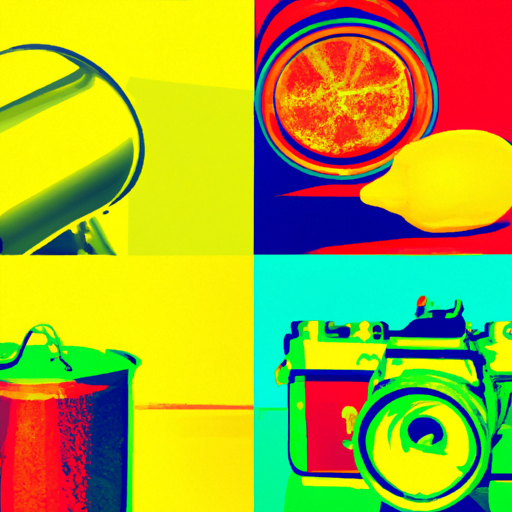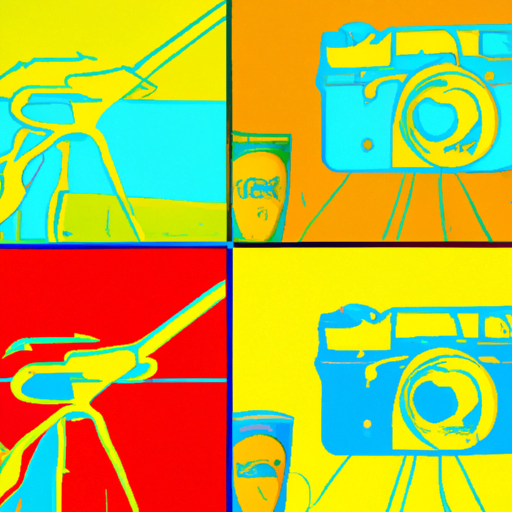
-
Table of Contents
Exploring Pop Art Inspired Design

Pop art is a movement that emerged in the mid-1950s in Britain and the late 1950s in the United States. It was a reaction against the dominant art movements of the time, such as abstract expressionism, and sought to incorporate popular culture and everyday objects into art. Pop art inspired design has since become a popular and influential style in various creative fields, including graphic design, fashion, and interior design. In this article, we will explore the origins of pop art, its key characteristics, and how it has influenced design in different industries.
The Origins of Pop Art
Pop art emerged as a response to the consumerist culture and mass media that dominated post-war society. Artists sought to challenge the traditional notions of high art and blur the boundaries between art and everyday life. The movement was heavily influenced by popular culture, advertising, comic books, and mass-produced objects.
One of the pioneers of pop art was the British artist Richard Hamilton, who is often credited with coining the term “pop art” in 1957. Hamilton’s collage artwork, “Just what is it that makes today’s homes so different, so appealing?” is considered one of the earliest examples of pop art. It features a composition of various consumer products and media images, reflecting the consumerist culture of the time.
Key Characteristics of Pop Art
Pop art is characterized by its bold and vibrant colors, use of popular imagery, and a sense of irony and satire. It often incorporates elements of mass culture, such as advertisements, comic strips, and celebrities. Some of the key characteristics of pop art include:
- Bright Colors: Pop art is known for its use of bold and vibrant colors, often in contrast with each other. These colors help to create a visually striking and attention-grabbing effect.
- Popular Imagery: Pop art draws inspiration from popular culture and everyday objects. It often incorporates images of celebrities, consumer products, and mass media.
- Repetition: Pop art frequently uses repetition of images or motifs to emphasize the mass-produced nature of popular culture.
- Irony and Satire: Pop art often employs irony and satire to critique consumerism and the superficiality of popular culture.
Pop Art Inspired Design in Graphic Design
Pop art has had a significant influence on graphic design, particularly in advertising and branding. The bold colors, popular imagery, and sense of irony associated with pop art have made it a popular choice for creating eye-catching and memorable designs.
One example of pop art inspired design in graphic design is the iconic Campbell’s Soup Cans series by Andy Warhol. Warhol’s use of repetition and bright colors in his artwork revolutionized the advertising industry and challenged the traditional notions of art. His work blurred the lines between commercial art and fine art, paving the way for future generations of graphic designers to experiment with pop art aesthetics.
Another example is the use of pop art inspired design in music album covers. The Beatles’ album cover for “Sgt. Pepper’s Lonely Hearts Club Band” is a famous example of pop art influenced design. The cover features a collage of various celebrities and cultural icons, reflecting the spirit of the pop art movement.
Pop Art Inspired Design in Fashion
Pop art has also made a significant impact on the world of fashion. Designers have embraced the bold colors, popular imagery, and sense of irony associated with pop art to create unique and visually striking collections.
One notable example is the collaboration between fashion designer Jeremy Scott and the brand Moschino. Scott’s collections often feature pop art inspired designs, incorporating bright colors, cartoon characters, and playful motifs. His work blurs the boundaries between fashion and art, creating a unique and memorable aesthetic.
Another example is the use of pop art inspired prints and patterns in fashion. Designers such as Diane von Furstenberg and Versace have incorporated pop art elements into their collections, creating garments that are both fashionable and visually impactful.
Pop Art Inspired Design in Interior Design
Pop art has also found its way into interior design, adding a playful and vibrant touch to spaces. The use of bold colors, popular imagery, and a sense of irony associated with pop art can transform a room and create a unique and visually stimulating environment.
One example of pop art inspired interior design is the use of pop art prints and posters. These can be used as statement pieces or incorporated into a gallery wall to add a pop of color and personality to a space.
Another example is the use of pop art inspired furniture and accessories. Designers have created furniture pieces that feature bold colors, geometric shapes, and popular imagery, reminiscent of the pop art movement. These pieces can serve as focal points in a room and add a touch of whimsy and creativity.
Conclusion
Pop art inspired design has had a significant impact on various creative fields, including graphic design, fashion, and interior design. The movement’s bold colors, popular imagery, and sense of irony have made it a popular choice for creating visually striking and memorable designs. From Andy Warhol’s iconic Campbell’s Soup Cans to Jeremy Scott’s pop art inspired fashion collections, pop art continues to inspire and influence designers around the world. By incorporating elements of popular culture and everyday objects, pop art has challenged traditional notions of art and brought art closer to the masses.
Whether it’s a graphic design that catches your eye, a fashion collection that makes a statement, or an interior design that adds a playful touch to a space, pop art inspired design continues to captivate and inspire us with its vibrant colors, popular imagery, and sense of irony.
